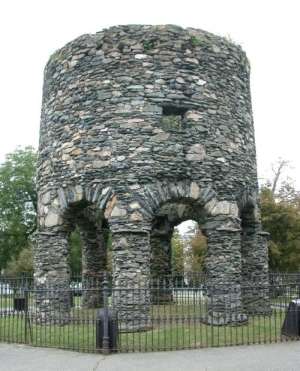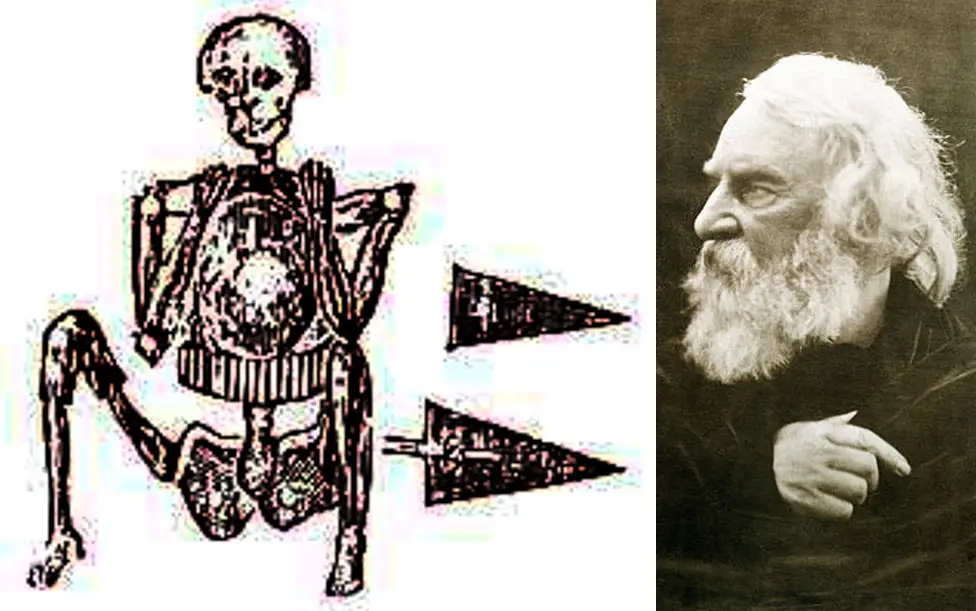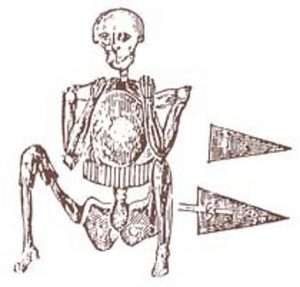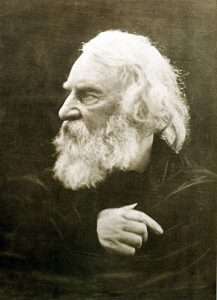The Fall River skeleton discovered in 1832 in a sand bank near a church had an unusual feature: It was clad in armor.
Not 20 miles north another mysterious discovery had been made: Dighton Rock, a 40-ton boulder with strange writing carved in it.
And some 30 miles south in Newport, R.I., stood a stone tower that some – including a famous poet — thought the Vikings had built.
The discovery of the Fall River skeleton so near those other artifacts inspired theories that an ancient people had colonized America well before Columbus. Maybe they’d written their epitaphs on the rock found in Dighton.
If the skeleton survived, modern scientists might have solved the mystery. But the skeleton and its armor remained intact for only 11 years after their discovery.
Fall River Skeleton in Armor
Laborers uncovered a skull as they dug down a sand bank in the town of Fall River. They dug further and found a body in a sitting posture, enveloped in a covering of coarse dark bark. Copper bangles, brass arrowheads and triangular copper armor surrounded the Fall River skeleton. It had a belt made up of 41 small brass tubes.
Most people at the time thought the skeleton belonged to a Native American chief. Given Fall River’s location, he could have belonged to the Narragansett or Wampanoag tribe.
Some thought the Fall River skeleton belonged to a Phoenician, Carthaginian or Egyptian mariner who discovered North America.
Longfellow
The skeleton took up residence in the Fall River Athenaeum, where Henry Wadsworth Longfellow went to see it.
He liked what he saw.
“The skeleton in armor really exists. It was dug up near Fall River, where I saw it two years ago,” he wrote. “I suppose it was one of the old northern sea rovers who came to this country in the 10th century.”
Longfellow wrote a poem, The Skeleton in Armor. “I was a Viking old,” the narrator declares.

The Newport Tower
He included the Newport Tower in the poem. The Viking brought to the new land a wife, “a blue-eyed maid,” he wrote. She died, and “Under that tower she lies.”
Fall River Fire
The fire of 1843 destroyed both the athenaeum and the skeleton inside it. It happened when two boys playing with a small cannon set 20 acres of Fall River on fire, burning the post office, custom house, shops, banks, churches and the homes of 200 families.
The fire made it impossible to date the remains of the Fall River skeleton in armor. But it couldn’t have lasted more than a few centuries because it was buried in moist soil. That rules out the ancient mariner theory.
In 1881, Henry E. Chase of Brookline, Mass., debunked the theories about a pre-Columbian colony in an essay, Notes on the Wampanoag Indians.
Chase pointed out the Indians had a custom of stringing tubes of copper or brass in wide belts, and they buried their dead in a sitting position.
“We may regard him as a very ordinary and vain Indian, buried in his finery,” he wrote. “[O]r we may think of him as a successful warrior safely returned from a secret participation in King Philip’s war, and afterwards buried in the spoils which he had stripped from a fallen foe.
Several decades later, archaeologists discovered the brass arrowheads to be the same as those the Iroquois used.
Archaeologists eventually determined the Newport Tower was actually the remains of a 17th-century windmill.
But they never solved the mystery of the Fall River Skeleton in Armor.
Click here to read Longfellow’s poem, The Skeleton in Armor.
This story about the Fall River skeleton in armor was updated in 2022.
Images: Newport Tower By ajay_suresh – Newport Tower – Newport, RI, CC BY 2.0, https://commons.wikimedia.org/w/index.php?curid=110188720.



2 comments
There’s a lesson here…..do not let your children play with cannons…..:)
[…] I’m forgetting the name of the poet. A New England poet became aware of an artifact … of a man found in a grave postured in a sitting position with a suit of armor. It also was lost in a fire, but a modern interpretation is that this was likely the grave of an […]
Comments are closed.